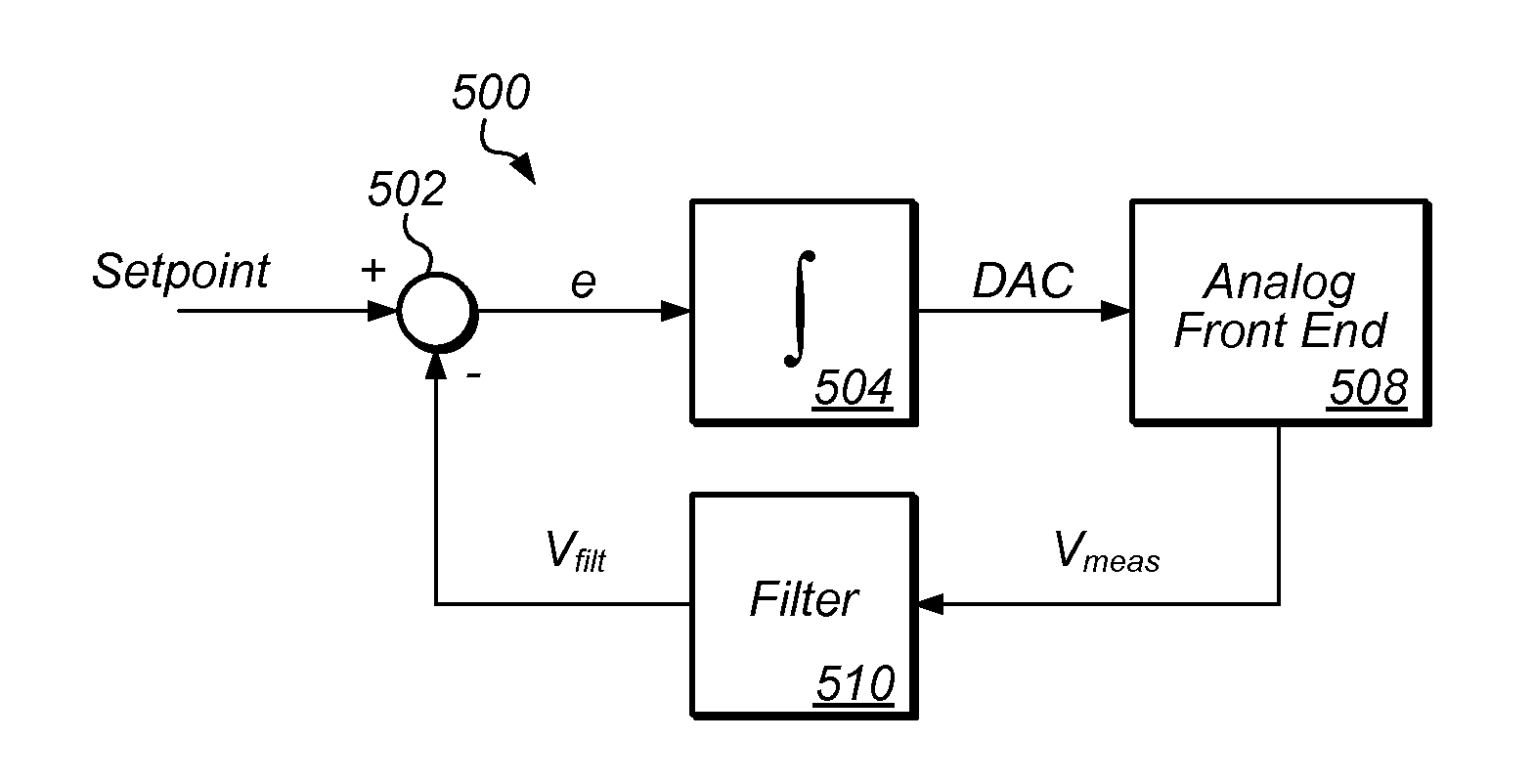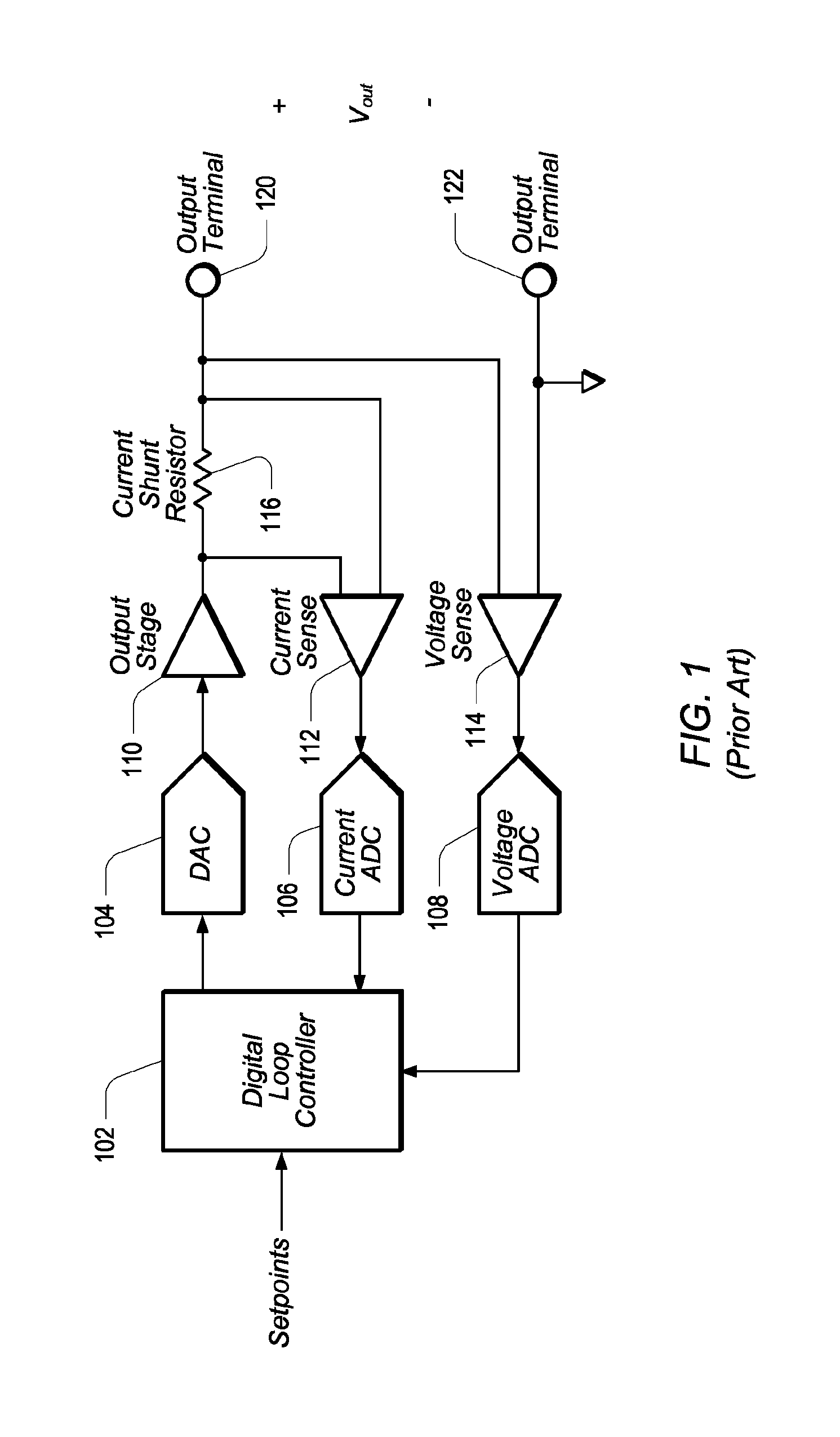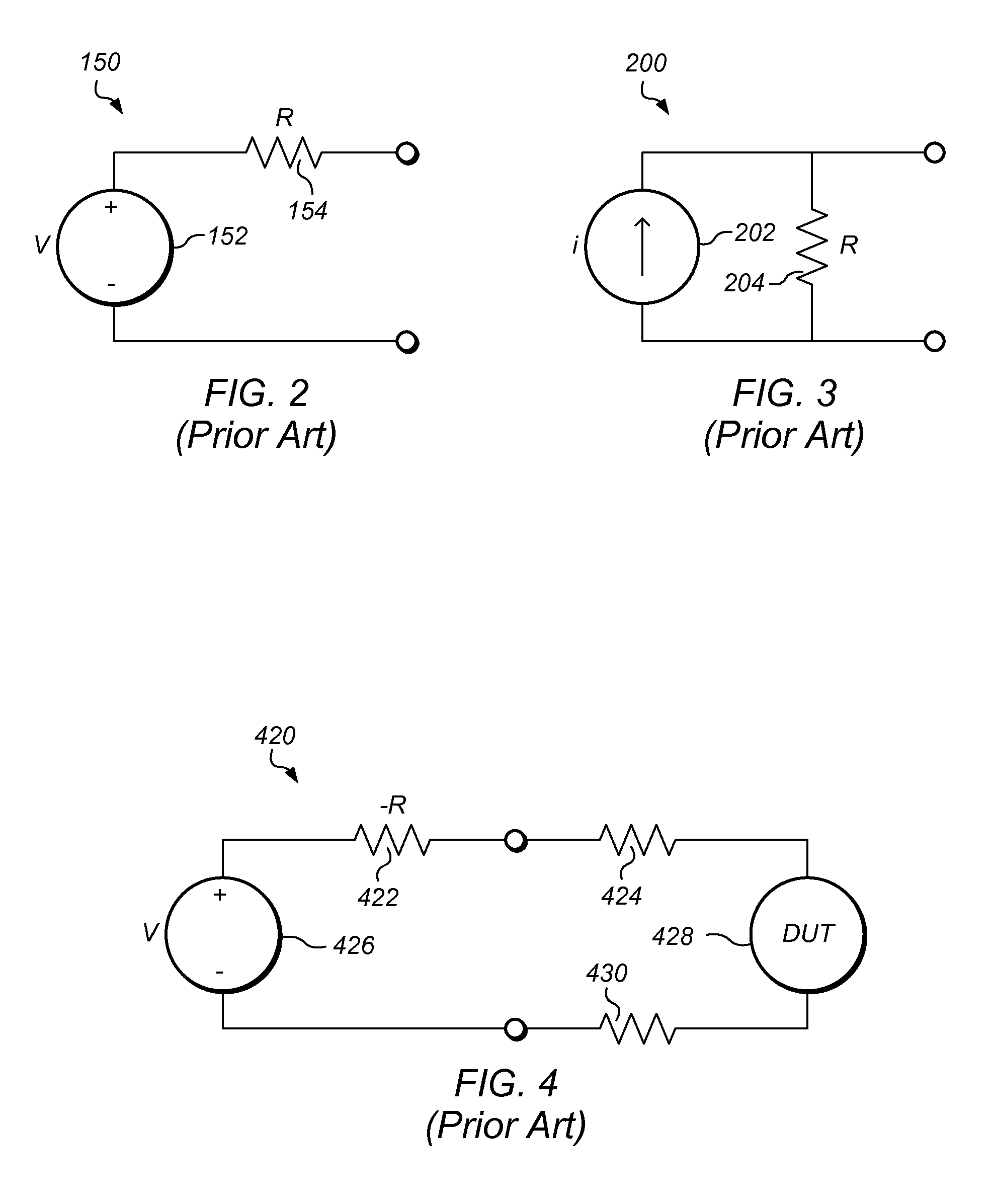Resistance simulation and common mode rejection for digital source-measure units
a technology of resistive simulation and common mode rejection, applied in the direction of electric variable regulation, process and machine control, instruments, etc., can solve the problems of increasing the achieve the effect of reducing the accuracy requirement on the dac, noise rejection advantages, and adding flexibility of the smu
- Summary
- Abstract
- Description
- Claims
- Application Information
AI Technical Summary
Benefits of technology
Problems solved by technology
Method used
Image
Examples
Embodiment Construction
[0035]FIG. 1 shows the basic architecture of one embodiment of a prior art SMU (source-measure unit) in which the entire control loop has been configured in the digital domain. A DUT (device under test), not shown, may be coupled between output terminals 120 and 122. Setpoints and compliance limits may be provided (programmed) to Digital Loop Controller (DCL) 102, which may provide a control output through DAC (digital-to-analog converter) 104 to Output Stage 110. Feedback from Output Stage 110 may be provided to Current ADC (analog-to-digital converter) 106 and Voltage ADC 108 via respective Current Sense element 112 and Voltage Sense element 114. The current feedback may be taken from the current flowing through current shunt resistor 116, and the feedback voltage may be taken from across output terminals 120 and 122. Current ADC 106 and Voltage ADC 108 may then provide the readback current and voltage values into DCL 102.
[0036]DCL 102 may be configured to check the measured curre...
PUM
 Login to View More
Login to View More Abstract
Description
Claims
Application Information
 Login to View More
Login to View More - R&D
- Intellectual Property
- Life Sciences
- Materials
- Tech Scout
- Unparalleled Data Quality
- Higher Quality Content
- 60% Fewer Hallucinations
Browse by: Latest US Patents, China's latest patents, Technical Efficacy Thesaurus, Application Domain, Technology Topic, Popular Technical Reports.
© 2025 PatSnap. All rights reserved.Legal|Privacy policy|Modern Slavery Act Transparency Statement|Sitemap|About US| Contact US: help@patsnap.com



